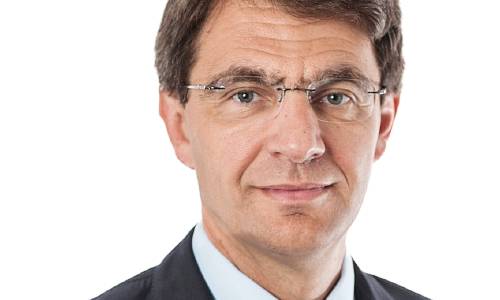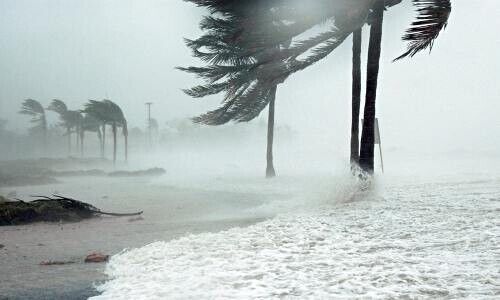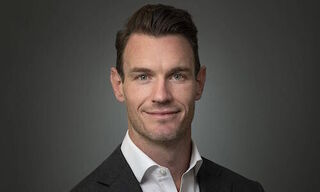Cat Bonds: Boom in the Eye of the Hurricane
Swiss-based wealth manager Twelve Capital says climate change is creating a very lucrative environment for catastrophe bonds as sharp increases in insurance premiums open up a world of investment possibilities.
At the end of April, the National Hurricane Center in Miami, Florida, raised the alarm. A low-pressure zone had built up over the Atlantic with enough energy to become a hurricane. The surprising thing was it was a month before the normal annual hurricane season should start.
The event was more than likely captured thousands of kilometers eastwards on Twelve Capital's radar. That wasn't by chance. The Zurich-based financial boutique specializes in catastrophe bonds, or so-called «Cat Bonds» which help reinsurers transfer major risks, including damages from hurricanes, to investors.
What was once a niche segment in the financial markets has become increasingly important, even critical.
Steep Trajectory
The volume of cat bonds has been rising continually since 2010. Twelve Capital's founder and chairman Urs Ramseier (image below) believes that the number of outstanding cat bonds in the market could approach $50 billion this year, a new record. About a decade ago, the volume was about half of what it is now.

(Image: Twelve Capital)
According to him, the trend is on a steep upward trajectory. «We expect the same pace of growth over the next five years», Ramseier tells finews.com. In Switzerland, he is one of the most experienced experts in securitized insurance risks, or so-called Insurance-Linked Securities (ILS).
Significant Damage
The volume growth is an indication of the enormous pressure weighing on the insurance industry right now. Climate change has prompted a strong increase in natural disasters. Since 2017, insurers have faced aggregated damages of more than $100 billion.
As a result, there has been an explosive rise in premiums across the board. In storm-prone Florida, house owners now pay many times what they did just a few years ago for insurance.
«Outstrips the capital of all insurers»
This is all happening at a time when reinsurers are required to keep enough capital aside for potential damages, with major risks having to be underlaid by as much as 100 percent equity, according to the Solvency II guidelines. «That outstrips the capital of all insurers», Ramseier says. Anyone who wants to insure that kind of risk needs the financial markets.
All those developments taken together have proven highly lucrative for cat bond investors such as Twelve Capital. The strong rise in premiums has prompted the same level of investment returns, as the boutique's flagship Twelve Cat Bonds fund return of 17 percent last year clearly shows.
Nothing Extreme
That is the kind of thing that investors like to see. The fund now manages more than $3 billion and about $1 billion of that has come in over the last two years alone. The inflows this year have been very pleasing as well, Ramseier says.
Currently, the trend shows that the number of storms and bad weather is increasing worldwide. Extreme events, those that could prompt payment from cat bonds, however, have not become more frequent. Hurricane Ian in 2022 didn't trigger bond payouts and there were no large-scale natural disasters prompted by weather in 2023.
Only Danger
Cat bond investors are in a great place, one almost akin to the eye of a hurricane. They are not being asked to cough up as payouts depend on the strength of the storm in question. In the meantime, reinsurers are on the hook for the smaller damages being sustained, which comes to a relatively high number when aggregated. The only danger Ramseier sees for his fund is the possibility of stronger hurricanes in the future.
The alarm in Miami was no good omen for that, even though the storm cell lost power over the middle of the ocean and dissipated harmlessly. The significant rise in ocean temperatures this year has prompted Colorado State University to predict several massive storms for 2024
Tough Season Ahead
The meteorologists there expect 23 storms to be named this year, of which 11 are expected to be hurricanes and 5 heavy hurricanes. The average season of the past 30 years has been 7.2 and 3.2 respectively, or much lower.
The American East Coast has very high insurance density, something that can prompt damages to skyrocket. In the less developed parts of Mexico to the south, exposed to the same weather, the situation is not at all the same.
Emerging Markets
Given that, some investors see opportunities in emerging markets. The World Bank and regional organizations are also using ILS instruments to help victims of natural disasters. These disaster relief ILSs are set up parametrically. They are not triggered by specific levels of damage but when a natural disaster has reached a certain level of intensity.
That makes payouts less complicated, transparent, and predictable, something that investors appreciate. «We are very interested in disaster relief in emerging countries», Ramseier confirms, «that is something we are building up now». It is a segment of the market that is experiencing fast growth, although it throws off lower returns than cat bonds do. For him, that is not necessarily a disadvantage as helping emerging countries qualifies as impact investments.
Subsidized Insurers
That makes those products interesting for retirement funds with a sustainable investment agenda. «The potential could be giant», one of the sector's pioneers indicates.
The benefit for storm victims in Mexico is clear but less so in Florida. But even in the US, there are opportunities as building insurance in the state has to be subsidized given some homeowners can no longer pay for the obligatory insurance.
A Problem in Europe?
That could prompt the development of «insurance for the uninsurable» Ramseier believes, which would also qualify as impact investments
He also predicts this could become an issue in Europe. «The reason is again climate change, which is forcing up premiums in a way that private individuals can no longer afford house insurance in certain regions». All in all, that is a perspective that makes the American East Coast appear to be much closer than it is in reality.























